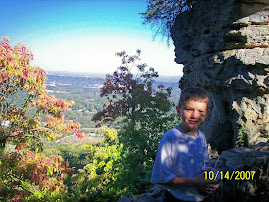Curriculum Standard: (For third grade)-MS Frameworks: Earth and Space Science
4. Develop an understanding of the properties of Earth materials, objects in the sky, and changes in Earth and sky.
b. Compare and contrast changes in the Earth's surface that are due to slow processes (erosion, weathering, mountain building) and rapid processes (landslides, volcanic eruptions, earthquakes, floods, asteroid collisions).
Big Idea: Rapid changes the planet goes through-Writing descriptive paragraphs on the explainable yet mysterious quirks of Mother Nature (specifically volcanoes)
Preparation:
1. Introduce to the class the elements and writing mechanics of what makes a thoughtful and descriptive paragraph.
2. Given a particular topic, other than volcanoes, model for the class the steps taken into completing a descriptive paragraph.
3. Answer any questions the students may have regarding writing descriptions and paragraphs.
4. Let the students know that they are going to listen as you read an Expository text about volcanoes.
5. Make sure students understand what the word expository means.
6. Introduce the text, Eruption! The story of Volcanoes
7. Ask students if and where they've seen volcanoes. Ask: "Were they erupting like the one on the front cover of the text?"
8. Ask if they've ever seen any other types of changes in the Earth's surface i.e., landslides, avalanches, floods, etc.
9. Make a quick list of the different observed changes in the Earth's surface on the board.
10. Relate this list to volcanoes by telling the students that these are all rapid or fast changes that occur on the Earth's surface from time to time.
11. Read the expository text, Eruption! The Story of Volcanoes to the class.
12. While reading, let the students know that they will write a thoughtful paragraph of how volcanoes are formed. They will also include additional information they may have found interesting while listening to the book.
13. Finish reading and provide a model paragraph of what they are to do individually, by writing it on the board. Take key words and points, write them down and let students see how you can make complete sentences using them. Students may make suggestions to the teacher regarding what to write.
Guidance:
1. Students brainstorm and list descriptive key words from the text before writing the paragraph. The teacher will provide assistance, if needed.
2. Students begin putting the key words into complete sentences.
3. The teacher walks around and provides any additional help and assistance to those who may need it.
4. The teacher lets the students know that putting 5 of these paragraphs together make up an essay.
Application:
1. Introduce the concept of essays and begin a gradual transition and shift into them after several more assignments regarding paragraph formation.
Assessment:
Teacher generated rubric/checklist on written paragraph (include writing mechanics and grammar)
Subscribe to:
Post Comments (Atom)
.jpg)
.jpg)
.jpg)
No comments:
Post a Comment